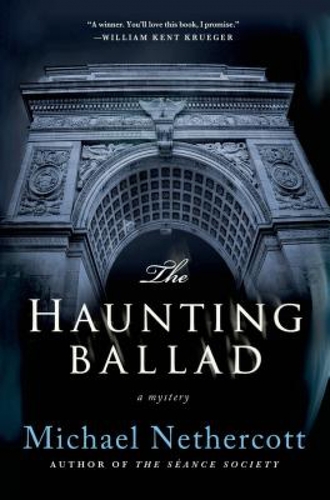BRATTLEBORO — Michael Nethercott flips through the pages of his second mystery novel, “The Haunting Ballad.” Over his shoulder through the large plate glass windows of Tulip Cafe, people pass back and forth on Elliot Street.
Near the end of the hardcover book, Nethercott points to a paragraph. This paragraph describes the moment protagonist Lee Plunkett realizes who killed Lorraine Cobble.
“Sadly, you don't always get what you wish for,” thinks Lee.
Yes. The mystery genre is about plot and structure, twists and turns, clues and red herrings.
Yet. In the well-written mystery book, plot and structure are MacGuffins.
A MacGuffin - a phrase coined by Alfred Hitchcock - may be what the characters chase after, but it's not what the story is about. Characters, the sleuth's challenges and limitations, metering out law or justice, and motives make a mystery story compelling.
“Who done it defines what type of a mystery it is,” said Nethercott.
If the reader doesn't care about who was killed and who did the killing, what's the point of the novel, said Nethercott about building his characters.
Roughly a month before her killing, I met Lorraine Cobble, the professional songcatcher, in the smoky, candlelit depths of the Cafe Fiancé. Actually, met is going too far. Observed. Yes, I observed her when she stormed over to our table to verbally explode all over the troubadour known as Byron Spires, a handsome young rat if ever there was one. - Lee Plunkett
In “The Haunting Ballad,” Nethercott's followup to “The Seance Society,” the inverted Sherlock Holmes and John Watson duo of the stumbling private detective Lee Plunkett and his partner, the wise Mr. O'Nelligan, investigate the suspicious suicide of musicologist Lorraine Cobble.
Set in 1957, a couple months after solving his first big case and coming to terms with his father's death, Plunkett travels with O'Nelligan to Greenwich Village. They are surrounded by folk musicians, meet a ghost chanter (who claims to sing songs she receives from the dead), a Civil War drummer boy, a family of Irish folk singers, and bad beat poets.
Plunkett and his long-term fiancé Audrey grapple with their relationship when a playboy troubadour sets his sights on Audrey.
For Plunkett, “The Haunting Ballad” is a story where he takes steady but tentative steps into his own as a private eye.
Suddenly I felt very uneasy. Wilton's harsh flippancy had made me ashamed of my own. This was, after all, a human being we were talking about, not an inconvenience or a passing, snide anecdote. No one deserved to end up as a broken rag doll sprawled among the trash. - Lee Plunkett.
Nethercott, who lives in Guilford, meticulously plots his novels. Still, he said he tries to create a cast of distinct characters each with their high and low moments.
“I purposefully wrote bad beat poetry for the book,” he said, smiling.
Nethercott said with his second book, he wanted to retain supernatural elements. He also conducted more research into folk music and 1957 Greenwich Village. He based Lorraine's apartment building on a friend's Greenwich apartment he helped her move into over 20 years ago.
“When doing the research, some little gifts come to you,” he said.
He grounded the story with historical details like the banning of Allen Ginsberg's poem “Howl.”
“That was a happy little find,” he said.
No sooner had we stepped into the hallway then a ghost appeared two doors down. At least he looked like a ghost - rail-thin, dressed all in white, and stooped over a gnarled walking stick. His narrow face, impossibly wrinkled, turned slowly toward us, and his pale lips parted to deliver his unearthly proclamation.
“Good day, gents.” - Lee Plunkett
Nethercott has written three short stories and now two novels featuring Plunkett and O'Nelligan. One of the shorts won the Black Orchid Novella award three years ago.
His work has also appeared in anthologies including Alfred Hitchcock Mystery Magazine. He was nominated for the Shamus Award for a short story introducing Plunkett and O'Nelligan.
O'Nelligan's skill for investigations has rubbed off on Plunkett, said Nethercott of his sophomore novel. As a private eye, Plunkett feels more confident.
As a novelist, Nethercott has grown to trust himself. The gaps in plot that can worry new novelists, Nethercott now takes in stride knowing he can construct any necessary bridges.
With his first novel, Nethercott remembers, “I sort of thought I could do it.”
His second novel, however, has Nethercott calmly proclaiming, “I'm a mystery writer.”
The book tour for his latest novel has Nethercott conducting readings in Vermont, Massachusetts, Connecticut, and New York City. He recently appeared on Vermont Public Radio.
Of “The Haunting Ballad,” Nethercott said, “It's got a lot of heart. I hoped it would come off as a human story as much as a structured mystery.”
